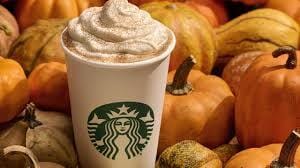- Mighty Consumer Notes
- Posts
- Can Releasing the Pumpkin Spice Latte Early Save Starbucks?
Can Releasing the Pumpkin Spice Latte Early Save Starbucks?
Will Starbucks Rally Behind Its Flagship Fall Menu?
Can Releasing the Pumpkin Spice Latte in August Save Starbucks?
It’s no secret that Starbucks is struggling. Starbucks, once the pioneer of modern coffee culture and a global powerhouse, is now grappling with declining sales and a deteriorating in-store experience. The company has faced consecutive quarters of disappointing financial results, attributed to inflation and customers balking at the high prices of their coffee. Importantly, wait times have increased, and online orders are being abandoned, signaling a decline in the consistent experience that Starbucks was once known for. Founder Howard Schultz, who has previously returned to steer the company through tough times, has noted that Starbucks is drifting "towards mediocrity" as it struggles to maintain its connection with customers.
Schultz, who built Starbucks into a community-driven brand, believes the company's recent troubles stem from a loss of the magic that initially made it successful—a sense of community and connection around coffee. Schultz’s point of view is valid. A connected community of customers is critical to a brand’s success in the current marketing landscape. Starbucks coffee is perceived as fast food rather than as an innovative pioneer coffee company. In other words, spelling your name out for a barista feels more like an inconvenience than an intimate connection. Starubcks no longer has dominant control over key communities of customers like: budget conscious coffee drinkers, commuters, or hybrid workers..
Despite these challenges, Schultz has no plans to return as CEO. Instead, the task of revitalizing Starbucks now falls to Brian Niccol, the newly appointed CEO, known for turning around Chipotle. Consumers now wait with bated breath to see if Niccol, who many refer to as “Restaurant Jesus”, has the secret recipe to save Starbucks. Starbucks’s first move under Niccol: roll out the Pumpkin Spice latte in August along with the rest of Starbucks fall specialty menu.

If you’ve been living under a rock or hate autumn, the Pumpkin Spice Latte (PSL) is made with pumpkin, espresso, steamed milk, cinnamon, nutmeg and clove. This best-selling beverage comes in a few varieties: Hot, iced or blended.
Starbucks' fall menu will also include:
Its pumpkin cream cold brew
An iced pumpkin cream chai
An apple crisp oat milk macchiato
An iced apple crisp oat milk shaken espresso
A raccoon cake pop
A pumpkin cream cheese muffin
Although there is no official statement about the decision to make this early release, one possible thesis is that Starbucks is attempting to rally behind one of its strongest assets, its Fall menu. The Fall menu’s release always generates buzz and brings in customers eager for a taste of autumn. It is true that the first sip of a pumpkin spice latte on a crisp fall day is magical. There is no argument against that.
But, will rolling out the Fall menu in August help Starbucks build the initial momentum for recovery? As much as I love pumpkin spice lattes, I don’t think it does.
For starters, drop the Fall menu before labor day?! Most of the U.S. is still trying to cling to the final few days of summer, and it’s still brutally hot and humid across the country. The built anticipation that drives sales is eliminated. Pumpkin muffins don’t really pair well with flip flops and heatwaves.
Most importantly, though, the Fall Menu does not solve the key issues challenging Starbucks: high prices, long wait times, and brand’s Identity crisis.
The Pumpkin Spice Latte is currently priced between $5.50 and $6.50, before barista tip, based on size. That price is comparable with national third wave coffee shops like blue bottle and La Colombe as well as local specialty coffee shops such as 7 Grams or Devocion in NYC that are considered higher quality options.
Second, the PSL is a complex specialty drink that needs to be steamed and frothed. This only exacerbates Starbuck’s already long wait times.
Finally the PSL does not solve Starbucks identity crisis. The company is trapped between Howard Schultz's image of a craft espresso bar that is a 3rd space for consumers and a fast food chain with thousands of locations across the globe, including drive-throughs and stalls in airports and train stations.
Starbucks’s underlying problems remain unresolved by nutmeg and cinnamon in August.
Is there a path forward? 100%
Regardless of recent struggles, Starbucks has tremendous brand equity. Starbucks changed the way Americans consume and even think of coffee. The truth, however much it hurts, is that the company is no longer a third space. That vision disintegrated with Starbucks supercharged growth. Do those disgusting warm milk pitchers and crushed sugar packets feel like a second home?
Startbrucks can re-achieve third space through consistency! In a pinch, consumers know they can count on Starbucks for a really solid cup of coffee. That’s important. Look at the line at an airport Starbucks! The demand is still there. Embracing consistency, and streamlining operations can create the upward push for Starbucks that the PSL cannot.
Importantly, achieving speed and consistency can help Starbucks restore its position in the commuter and on-the-go community, which values speed and consistency above all else.
Of course, the speed element will still need to be solved.
Nevertheless, as NYC finally feels like it’s fall, I will be grabbing a PSL on my lunch break, no matter the price.